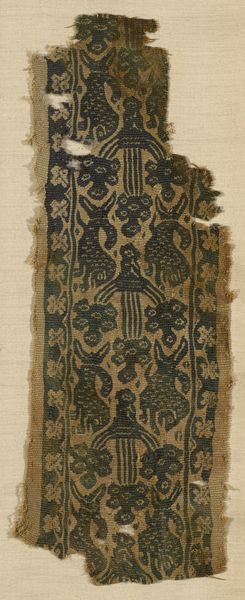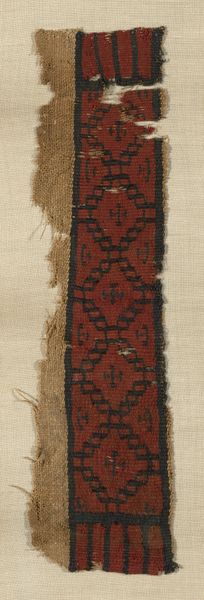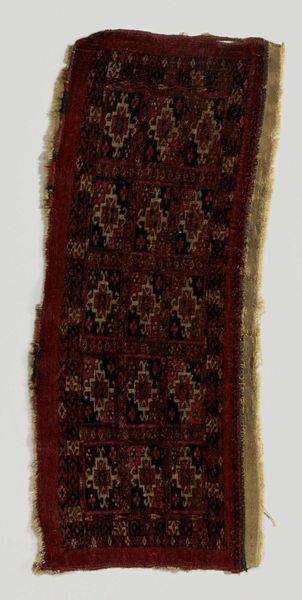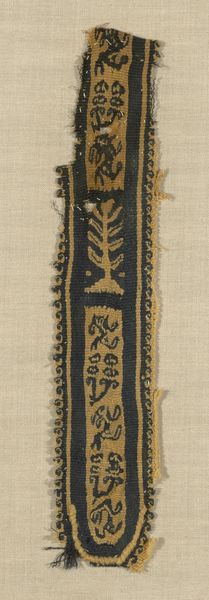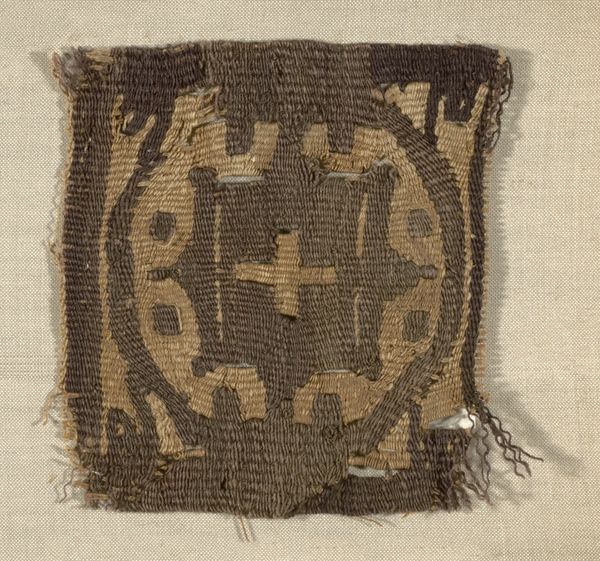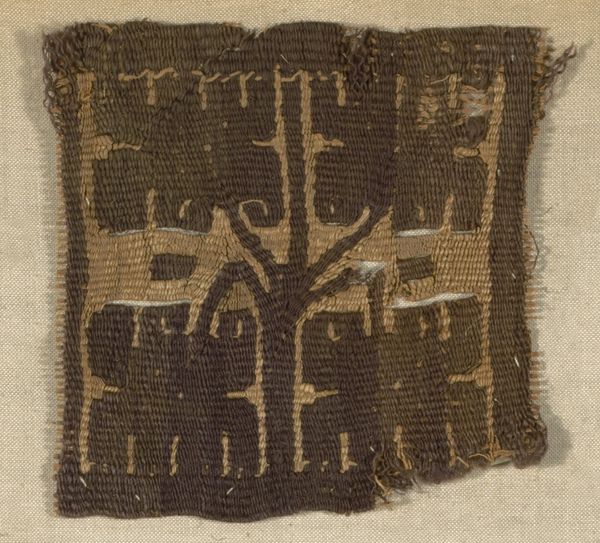
Fragment (Border) Roman period (30 B.C.– 641 A.D.), 4th/5th century
0:00
0:00
weaving, textile
#
textured
#
weaving
#
textile
#
line
#
islamic-art
Dimensions: 14.0 × 3.8 cm (5 1/2 × 1 1/2 in.)
Copyright: Public Domain
Curator: What strikes me is the fragment’s graphic simplicity; a stark black design against the ground, repeated urn shapes suggesting classical motifs, but repurposed into something quite different. Editor: Indeed. This is a Coptic textile, titled "Fragment (Border)." It dates back to the Roman period, specifically the 4th to 5th century AD. We can observe here that these textiles, though initially serving utilitarian functions, quickly transcended into artistic displays laden with complex symbolic meanings. Curator: What is most striking to me is not merely what is shown but how it's rendered— the coarseness of the weave itself becomes part of the aesthetic. It’s fascinating how humble materials elevate into sophisticated artistry. It challenges our modern concept of labor as entirely divorced from the ‘art object.’ Editor: Absolutely. Considering its production would’ve been situated within larger social power structures. These were not created in a vacuum; rather weaving practices intersected economic needs and ideological messaging prevalent during Roman rule in Egypt, informing stylistic developments unique within Coptic society. Curator: The context transforms the appreciation, it’s no longer only a visual study but becomes this intersection of labor practices and symbolic production, which broadens my appreciation immensely. These designs traveled far, informing aesthetics and techniques in vastly different geographical regions throughout Late Antiquity and onward! Editor: Exactly, analyzing through this lens makes viewing a fragment transform it from a salvaged remnant into something evocative reflecting much more that lies unseen under history itself. Curator: What initially seemed merely aesthetic became something richer, where labor meets culture at this nexus. Editor: It leaves me considering: How might artistic production from antiquity challenge today's strict categorizations within our current social institutions that separate Art and Life, thinking and doing?
Comments
No comments
Be the first to comment and join the conversation on the ultimate creative platform.


